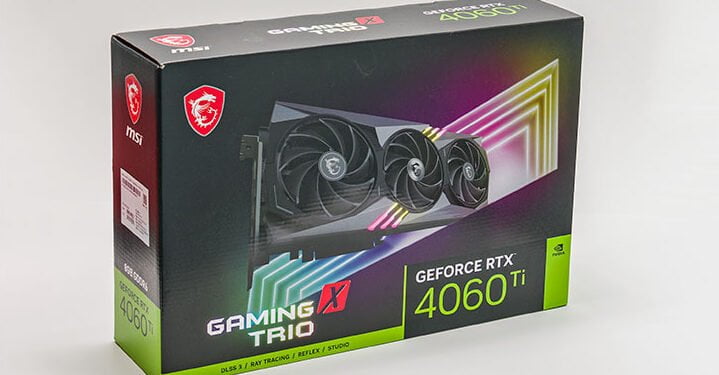
As expected of a modern 3-fan video card this is not a card that will fit inside every case… and that nice power port offset will pay dividends in that it allows this 338mm “long”, 141mm “wide” card to fit in more cases than experienced builders would assume it would. With that said… a 13.3-inch long, 5.55-inch wide, 1,167 gram / 2.58 hamburger units, card will be a surprisingly big “x60” class card for those who skipped the 3000-series and instead are upgrading from say a 2060 Super, or even an RTX 2070 class card.
They say a picture is worth a thousand words so lets show precisely how much ‘over’-sized this card really is.

First up, it will overhang a full 93mm (3.66-inches) off the end of your full-sized ATX motherboard.
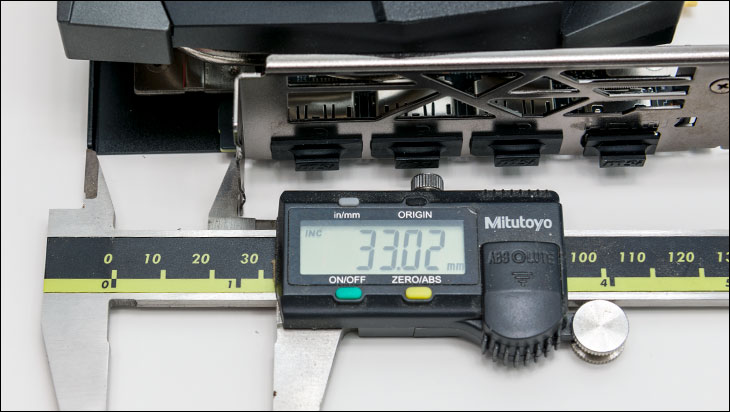
It will stick ‘up’ a good 33mm (~1.3-inches) over the ‘top’ of your cases rear PCIe slot cuouts.
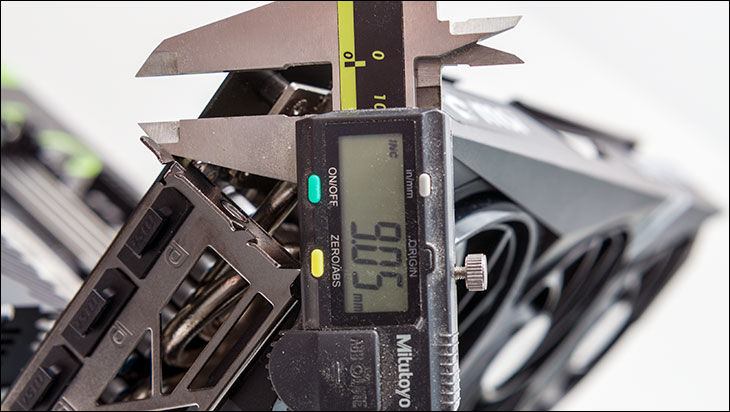
It will fil up two PCIe slots and intrude a good 9mm (0.35-inch) into the third PCIe slot’s zone on your motherboard.

It’s backplate will even intrude over 4.1mm (.16-inch) into the zone above your motherboards first PCIe x16 slot.

That’s a big footprint for those who have been out of the GPU buying ‘game’ for the past couple years. We just wish MSI has upsized the including connectivity options as the back I/O ports are pretty much bog standard RTX 4060Ti options (3 full sized DP 1.4a (not 2.0) ports, and 1 full sized HDMI 2.1 port).

To further help… the above photo has three generations of x60 class cards in it. In the back is this beefy boi, sandwiched in the center is an Asus Dual RTX 3060 (similar dimensions to the TI version), and in the front is one of the largest RTX 2060 Supers made: the Zotac AMP 2060 Super. So double check your cases specifications before blindly purchasing any RTX 4060 Ti… as thinking these new breeds of cards are going to be as small as previous generations is a recipe for stress.

On the positive side, all this extra space has ben put to such good use… as it makes most other RTX 4060Ti’s look flimsy in comparison. Let’s start with the backplate.

Terms such as ‘armor plating’ do spring to mind when thinking about this, 1.25mm thick, real steel backplate.

Of course, MSI’s engineering team had to make it robust to not only help take the weight of the massive Tri Frozr 3 cooling solution but also allow the front fan, and half the center fan, the luxury of having relatively little backpressure to overcome.

The upside to this massive cutout in the backplate is two-fold (beyond the obvious lowering of static / backpressure pressure). Firstly, it means over half the hot air will be pushed away from the video card instead of just recirculating around and around and around. In testing, with the backplate “hole” covered vs uncovered we sawg double digit differences in temperatures (at the same RPMs) over extended periods of time. Equally impressive is the lowering of pressure means the fans do not need to spin as fast, nor is there as much “ambient” noise created from the ‘waste air’ hitting the backplate and bouncing.
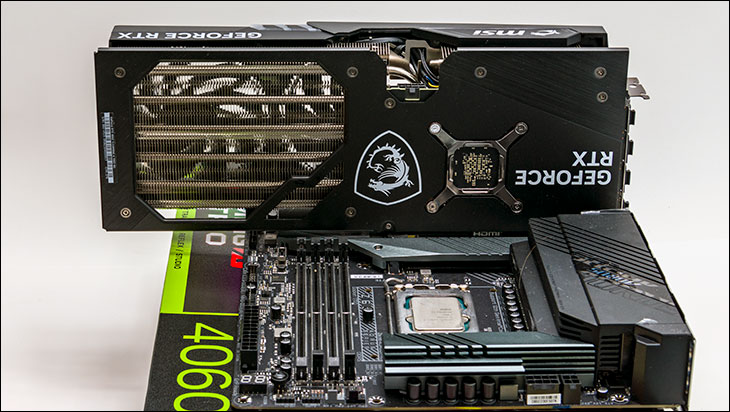
Once again in testing, this design tweak pays massive dividends over previous generations of Gaming X Trio cards. So much so that even under full load it is barely is audible… and thanks to that selfsame cutout + huge cooling tower combination, the fans do not even spin up for a surprisingly long while… as it can passively radiate the heat “up” and “away” from the card via the backplate cutout. Color us impressed.

Speaking of the cooling towers, MSI has further improved their efficiency through a wavy fin design. This wave folding pattern in the fin array significantly increases surface area without increasing static pressure. In fact… it probably lowers it as the ‘face’ of these two arrays is no long just a slab of fins that the fan(s) have to overcome.
The breakdown on the two fin arrays is as follows:

The rear most (nearest IO ports) is ~88mm X 115mm, or approximately 10,120 square millimeters worth of cooling footprint.

The front most (nearest the front of your case when it is installed in a system) is ~175mm x115mm… or a whopping 20,125 square millimeters.

Mix in the nickel plated, solid copper base with five heatpipes and a piddly little 160 watts of heat is a nothing burger.
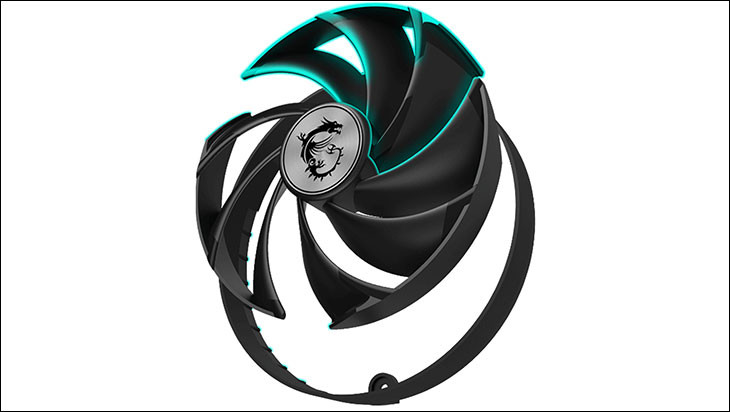
This goes double when the, three, next generation ‘Torx’ 95mm diameter fans are taken into consideration. Beyond the obvious 50 percent increase in CFM compared to two fan models, these are some of the most advanced GPU fans we have seen to date. As you can see MSI connects the ends of the fan blades into pairs of three. This nullifies one of the common catastrophic fan blade failures that earlier generation of cards sometimes (randomly) suffered, increases static pressure and CFM said fans are capable of moving at a given RPM. MSI then add in an exterior focusing ring that helps even out the edges air flow so as to reduce noise and improve cooling efficiency. To be blunt, this combination of tweaks is so impressive that we like MSI’s take on modern fan blade design better than ASUS – who bond all the fans into one big one via full ring of plastic (that has to increase pressure on the bearings more than is sensible). Color us highly impressed.
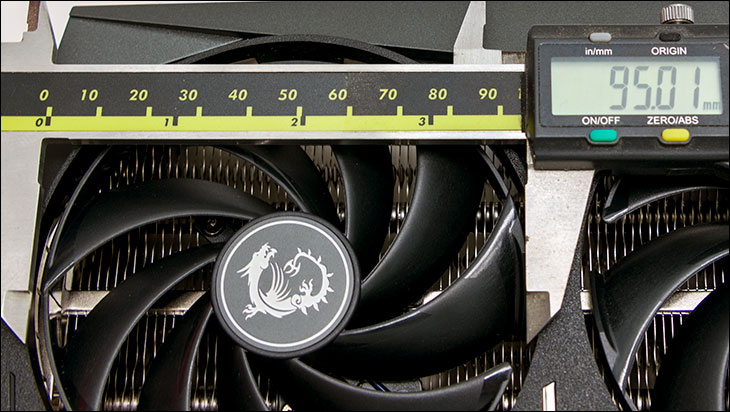
To be fair the reason that MSI made their premium GeForce RTX 4060 Ti Gaming X Trio’s cooling solution so gosh darn big is that it not only comes with one of the highest factory overclocks available on any RTX 4060 Ti (2670 vs NVIDIA’s standard 2535MHz) it comes with a lot of power overhead. To be precise you can increase the board power limit by a full 22 percent above NVIDIA recommended settings. Aka turn this 160-watter into a 195 watt TDP video card. That certainly adds a nice pep into its already quick step to say the least.
